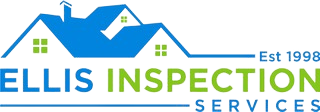Have you ever turned on your tap, only to find the water pressure too low or too high? Water pressure issues can affect everything from your morning shower to the lifespan of your plumbing system. As a home inspection business, we understand the importance of maintaining optimal water pressure. This blog post outlines a comprehensive water pressure inspection checklist to help you identify potential issues before they become costly repairs.
Understanding Water Pressure Basics
Water pressure refers to the force at which water flows through your pipes. Ideally, residential water pressure should range between 40 to 60 psi (pounds per square inch). Anything outside this range can lead to problems such as leaky pipes, inefficient appliances, or even water hammer.
- Low Water Pressure: Often caused by clogged pipes, leaks, or issues with the municipal water supply.
- High Water Pressure: Can stress your plumbing system and fixtures, leading to leaks and reduced appliance lifespan.
Inspection Checklist for Water Pressure
A thorough water pressure inspection can help identify potential issues early. Here’s what our certified professionals look for:
- Pressure Testing: Using a water pressure gauge to measure the psi at various points in the home.
- Inspecting Pressure Regulators: Ensuring pressure-reducing valves are set correctly and functioning properly.
- Checking for Leaks: Identifying leaks in pipes, faucets, and fixtures that could affect pressure levels.
- Analyzing Pipe Condition: Assessing for corrosion, sediment buildup, or blockages that could impede water flow.
Practical Tips for Homeowners
While professional inspection is crucial, here are some tips you can apply:
- Regularly check visible pipes for signs of leaks or corrosion.
- Ensure your water pressure regulator is set within the recommended range.
- Install a water pressure gauge to monitor levels periodically.
Maintaining the right water pressure is essential for the longevity of your plumbing system and the comfort of your home. By following this checklist, you can ensure that your water pressure stays within the ideal range. If you suspect any issues, don’t hesitate to contact a professional home inspection service to safeguard your home against potential plumbing problems.

